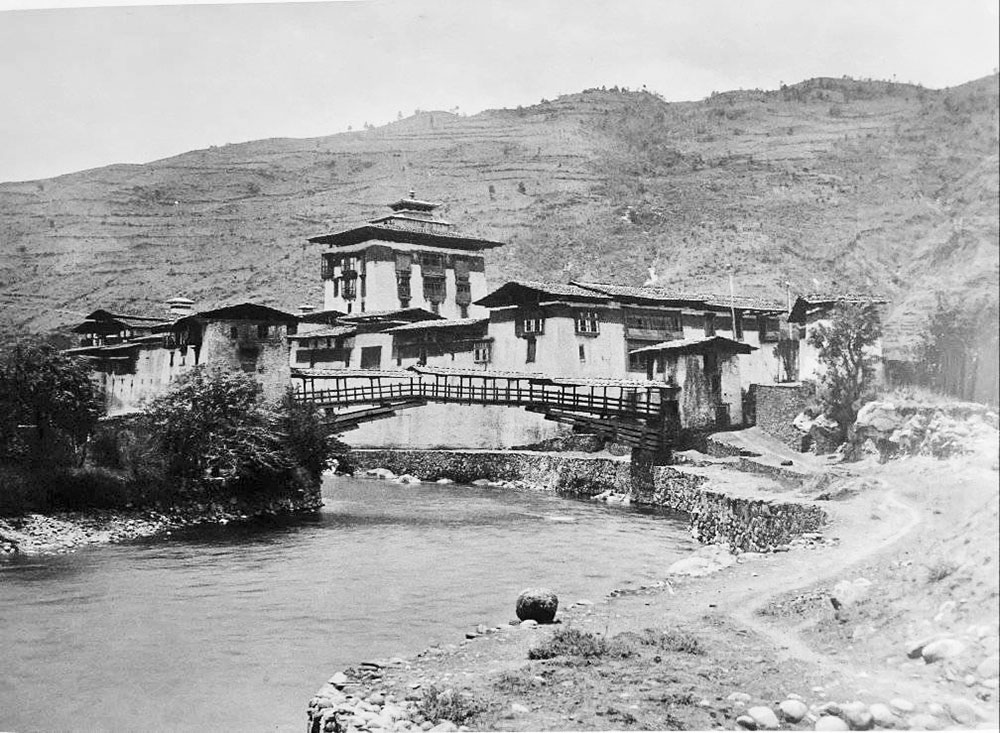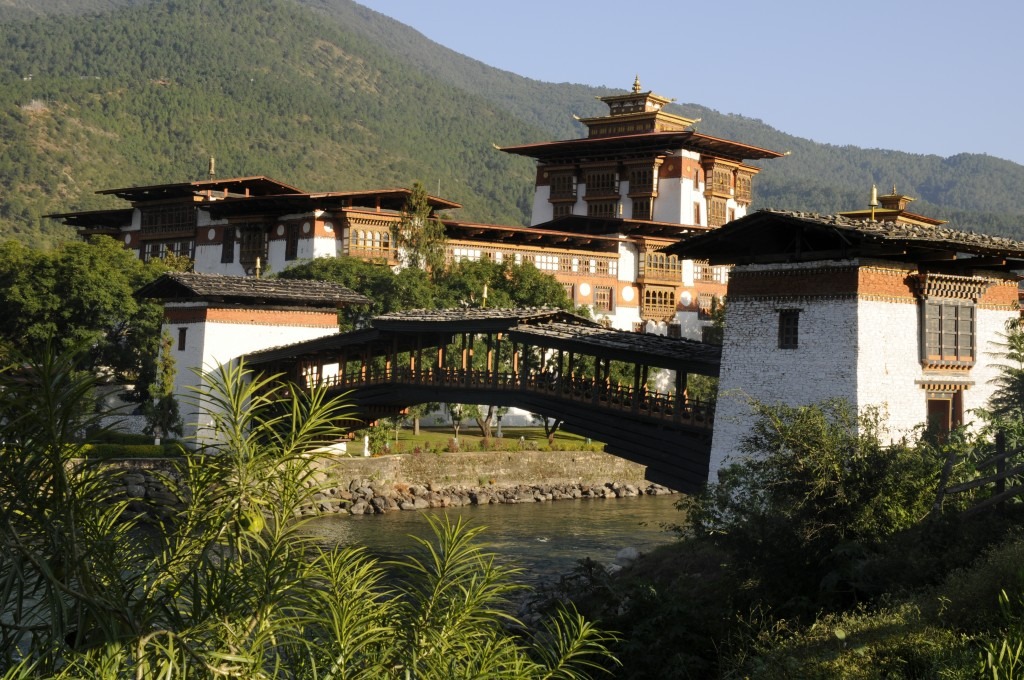Resurrecting the Ancient Bridge in Punakha
The second oldest and the second largest Dzong in Bhutan – the Punakha Dzong – was seriously damaged by a glacial lake outburst flood in 1994. It was restored to its original splendor by 2003. However, despite the completion of the Dzong, the wooden-roofed cantilever bridge or the bazam, leading to the dzong from the main road was not yet reinstated. The original bridge, built in 17th century architecture, was first destroyed by a glacial lake outburst flood in 1958. And, for decades, the reconstruction of the bazam posed major technical challenges for modern engineers.

The Punakha Bazam is the longest wooden cantilever bridge in the world with unsupported span.
As with all ancient dzongs, many of the old structures in Bhutan were built with very little historical records. No written descriptions or plans of a bazam could be unearthed to give reference to what was there before or how it was built. New plans depended on some old photographs of the original bridge.
For some time after the flood, the Punakha Dzong could only be reached by traveling 15 kilometers downstream to Wang- duephodrang. Later, a steel cable bridge was installed close to where the old bridge used to be. This was the bridge used until the new bazam was completed in May 2008. It was designed, built and financed by Pro Bhutan while a Swiss engineering company provided technical expertise.
Building it was a story of human might and determination. Teams of up to 100 men had to fell and extract 165 Chir Pine trees and then manually haul them down hundreds of meters of steep slopes. The trees were floated down the river. Upon arriving at a gravel forest road, the men lifted them onto trucks by hand.
Raw beams weighing about two tones each had to be carried, one at a time, on small trucks for the journey along mountainous roads. To enable the bridge to withstand any future glacial lake outburst flood, 20 concrete pipes, 3.5 meters long and weighing eight tonnes were placed vertically into the riverbed and filled with gravel. Concrete blocks weighing 700 kilograms each were placed into the riverbed. Hundreds of natural boulders, weighing as much as 1,000 kilograms were piled on top as reinforcement.
Modern technology was combined with the best of traditional techniques in resurrecting this ancient bridge in Punakha. Invisible steel elements were incorporated into the structure of the 35-meter long bazam to stabilize the high bridge arch and prevent it from twisting or falling sideways. The new bridge is 20 meters longer than the original at 35 meters.

The Dzong and the original bridge’s breathtaking beauty is based on the strength, the grace and the artistic harmony of this monas- tery-castle, which is of paramount importance for Bhutan, her Monarchy, her history, and her spirituality.

